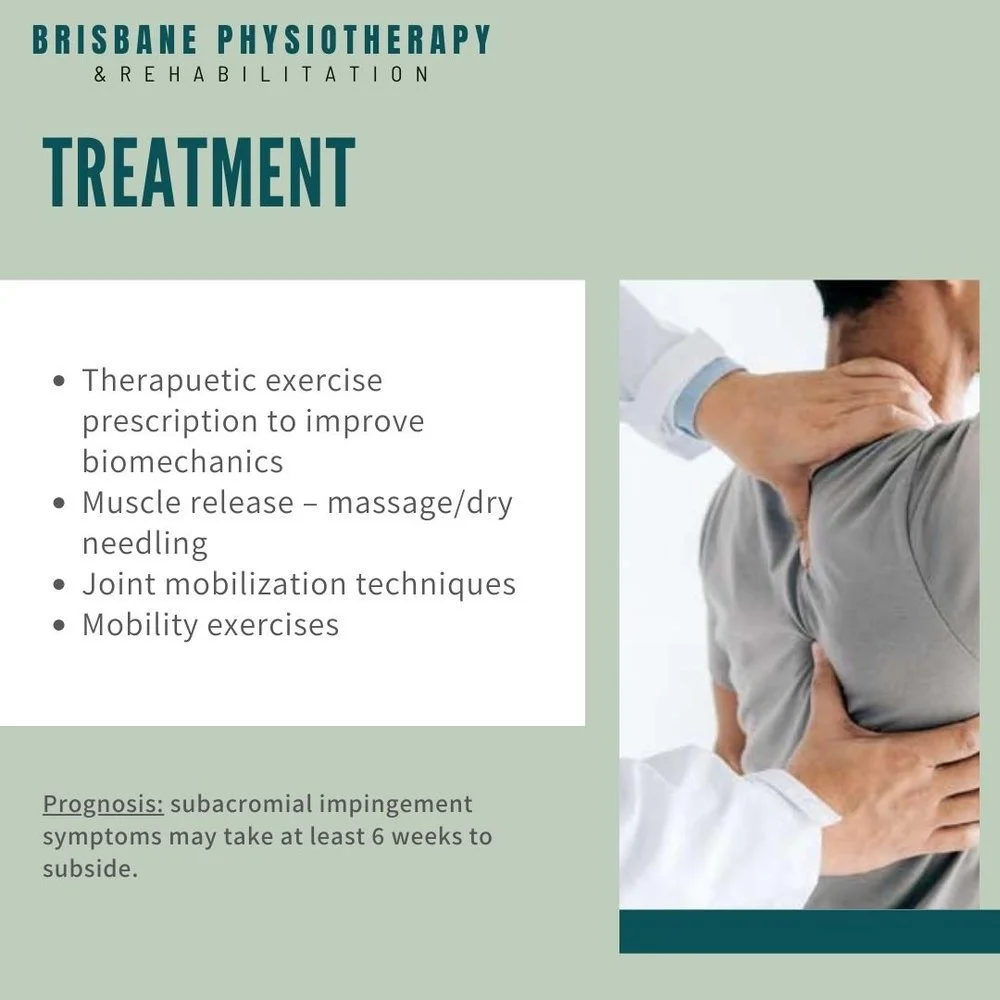Subacromial Impingement
What is Subacromial Impingement?
Description
Shoulder impingement occurs when the rotator cuff tendons are impinged as they pass through the subacromial space.
The impingement causes mechanical irritation of the rotator cuff tendons and may result in swelling and damage to the tendons.
Presentation
Pain that can spread from the top of the shoulder to the elbow.
Aggravating activities: lifting arm above head, lying on affected side, putting affected arm behind your back.
Pain or aching at night.
Weakness or pain in affected arm when lifting or reaching.
At least nine specific diagnoses may be associated with the signs and symptoms of impingement:
Subacromial bone spurs and/or bursal hypertrophy
AC joint arthrosis and/or bone spurs
Rotator cuff disease
Superior labral injury
Glenohumeral internal rotation defi cit (GIRD)
Glenohumeral instability
Biceps tendinopathy
Scapular dyskinesis
Cervical radiculopathy
Subacromial Impingement subtypes
The Subtypes of shoulder impingement include:
External
- Primary
- SecondaryInternal
Primary External Impingement:
Abnormalities of the superior structures of the shoulder joint may lead to encroachment into the subacromial space from above. The under surface of the acromion may be abnormally beaked, curved or hooked.
Secondary External Impingement:
Encroachment into the subacromial space from above in younger athletes may also occur due to inadequate muscular stabilization of the scapula (shoulder blade).
The rotator cuff tendons are also liable to be weakened following large volumes of load (e.g. through resistance in swimming or throwing).
Imbalance between the deltoid and rotator cuff muscles may also contribute to shoulder impingement.
Internal Impingement:
This occurs mainly in overhead athletes during the late cocking stage of throwing when impingement of the under surface of the rotator cuff occurs against the posterior–superior surface of the shoulder joint.
Subacromial Impingement Treatment
Physiotherapy Management
Muscle release – massage/dry needling
Joint mobilization techniques
Rotator cuff strengthening
Mobility exercises
Postural/scapula correction exercises


